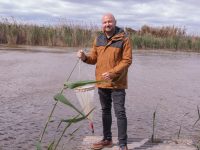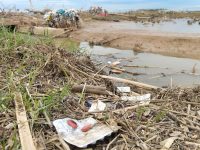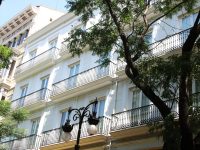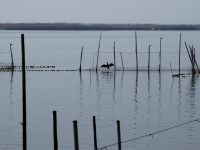Félix and the Albufera
El Festival Amfibi recupera un programa de Félix Rodríguez de la Fuente de 1970 on denunciava l’estat de l’Albufera de València
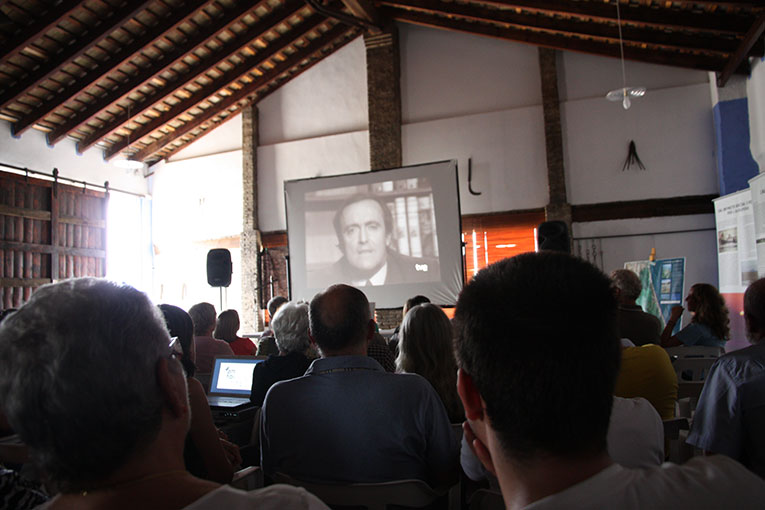
 Antonio Gómez Antonio Gómez |
||
|
«Factory waste, rice pads DDT infiltrations and other substances that tarnish the purity of its waters and kill the icthiological fauna are being dumped in La Albufera.» With his unique style, Félix Rodríguez de la Fuente denounced thusly the state of La Albufera in the seventies in an episode of his show Vida salvaje on TVE. It was 28 June 1970, and the naturalist communicated for the first time on television what Valencian scientists and naturalists like Ignacio Docavo or Miquel Gil Corell had told him before: the poor condition of La Albufera. The complaint had been made for years by the scientific community, but up to that moment, it didn’t have a place in the media. The programme, which had not been shown again after the first broadcast, has now been recovered by Fundación Global Nature and the Félix Rodríguez de la Fuente Foundation, along with other audio-visual fragments where the popular naturalist refers to La Albufera, and was shown during the last edition of the Festival Amfibi, organized by the Assut Foundation in the Trilladora del Tocaio venue in El Palmar. But in the seventies, pollution was not the only problem La Albufera, one of the most important wetlands in the Iberian Peninsula because of its biodiversity and ecological wealth, faced. In the context of the tourism and construction boom, a plan to urbanize La Dehesa de El Saler, the forest border separating La Albufera from the Mediterranean Sea, was approved. «La Dehesa de El Saler, a Pinus halepensis reserve, is a truly unique community of Mediterranean plants in the Iberian Peninsula, and must be preserved in its totality as part of La Albufera.» Rodríguez de la Fuente explained in these terms the ecological importance of forest of El Saler, with a final warning: «It would be extremely dangerous to alter what we have left of the beautiful La Dehesa de El Saler.» According to Odile Rodríguez de la Fuente, daughter of the famous nature communicator, this programme shows «a fundamental factor in the shift of the frame of thought that was occurring». The vice president of the Félix Rodríguez de la Fuente Foundations believes that «the Félix Rodríguez de la Fuente phenomenon says a lot more about Spanish people than about Félix himself, as people looking for a window to voice their concerns, as evidenced by the case of El Saler». The start of the media attention to El Saler The words of Félix Rodríguez de la Fuente were not welcomed by local authorities and Valencian newspapers, which sharply criticized the naturalist through various newspaper editorials. One of the most covered questions by the media was the suggestion by the host to place an African animals reserve in the forest of La Dehesa, to prevent its disappearance while creating a tourism opportunity. So, Rodríguez de la Fuente proposed the introduction of «African species such as giraffes, black rhinos, oryx, crowned cranes, other kinds of antelopes, flamingos, the already present ducks, marabous… because what’s known as photographic safari could be a wonderful complement to the incomparable enclave of La Albufera, a genuine beacon calling to tourists from around the world». The proposal can hardly be understood today, but perhaps it tied to what Ignacio Docavo defended, a new location for the zoo of Valencia he managed. In any case, the broadcast was the first time that urbanisation was publicly questioned in the media – at that time the plan was widely accepted by large sections of society –, who understood it as a synonym for progress and economic profit. The broadcast of Vida salvaje helped to highlight the importance of the park and its relationship with La Albufera. A few years later, between 1973 and 1974, the newspaper Las Provincias launched a campaign against the development of the residential area, empowering scientists and the environmental and popular movement that defended El Saler, and who finally got to prevent the construction of the development. Their tracks are still present in the landscape of La Dehesa, but the mobilisation created the frame for the declaration, already in a democracy, of both La Albufera and La Dehesa de El Saler as protected Nature Parks in 1986. But despite this, as the architect Carles Dolç recalled during the Festival Amfibi «development pressures on La Albufera have continued and will continue». Would the words of a naturalist on television or the media campaign of a local newspaper be equally effective today in order to save this natural area of its current and future challenges? Anna Mateu. Assistant Editor, Mètode. |
«Would the words of a naturalist on television or the media campaign of a local newspaper be equally effective today in order to save La Albufera?»
|
|
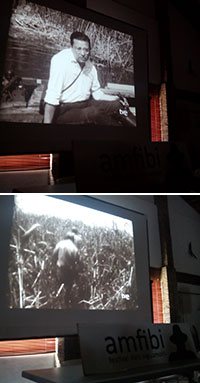 Anna Mateu Anna Mateu |
||

